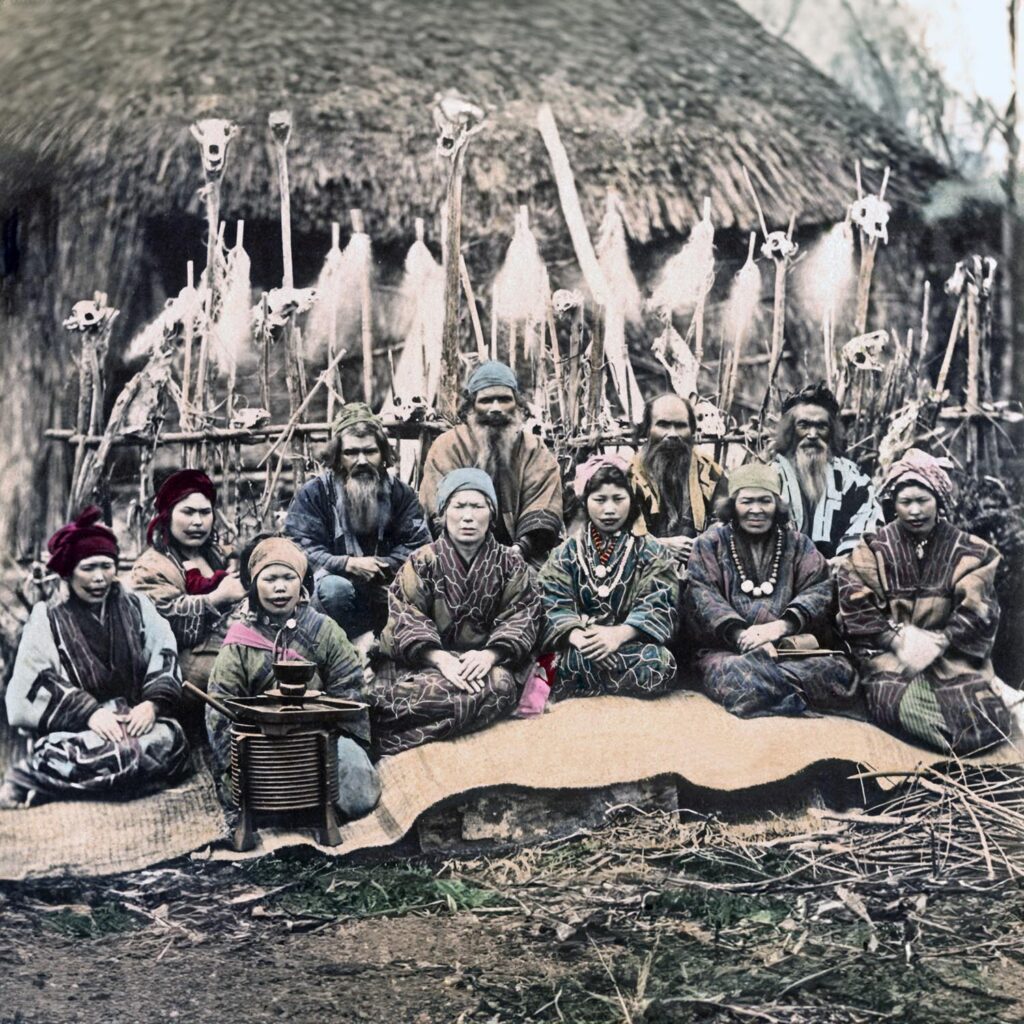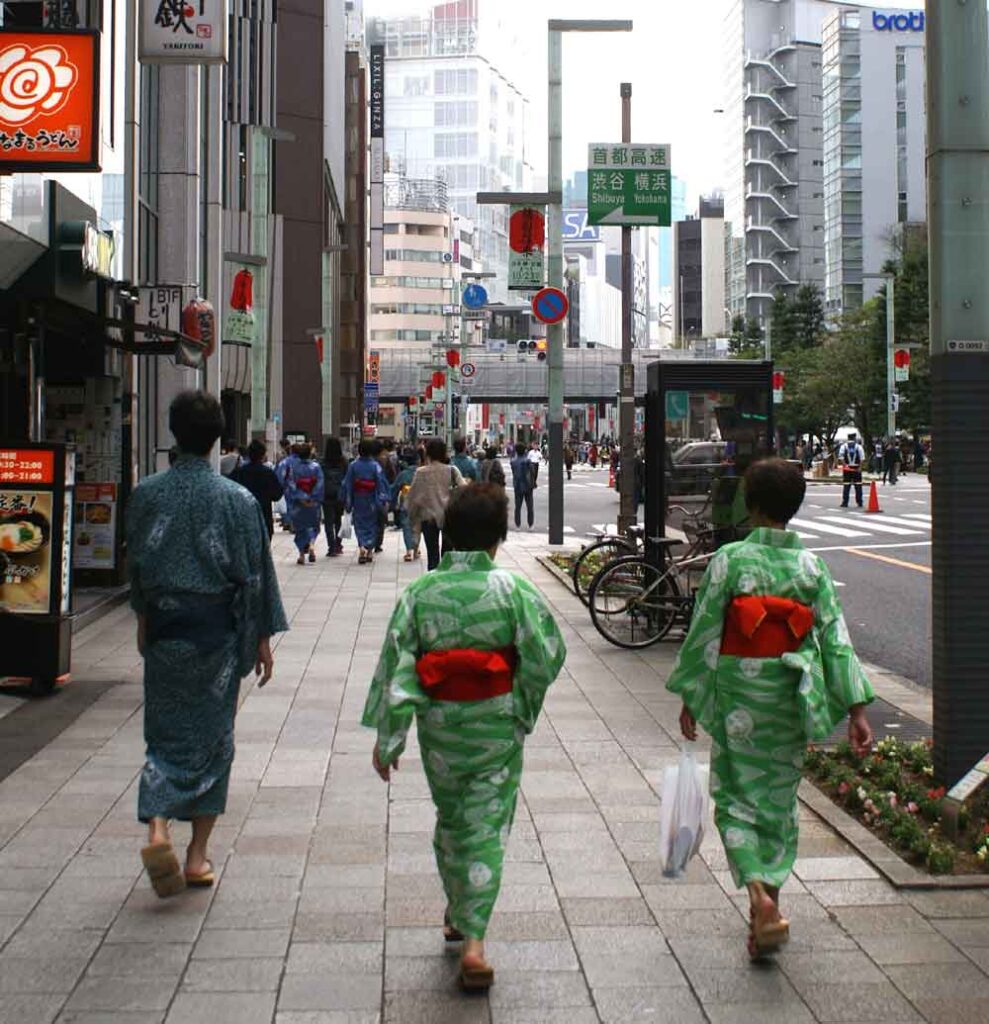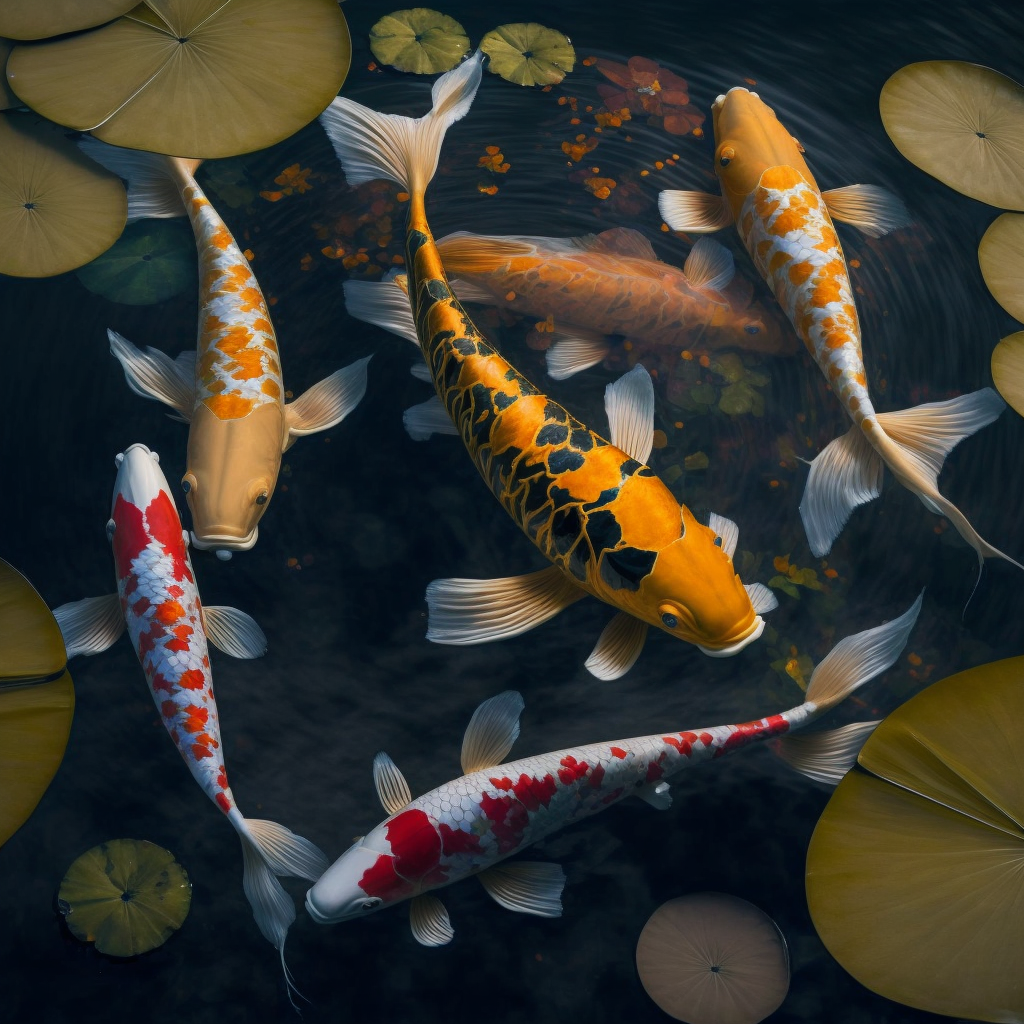Japan, famous for its cultural richness and centuries-old history, is home to a little-known but equally fascinating indigenous community: the Ainu. Originating from the north of the archipelago, the Ainu have a unique culture, steeped in tradition, spirituality and a deep connection with nature. This article will delve into the captivating world of Ainu culture, highlighting its essential aspects.
I. History and Origins of the Ainu
The Ainu, an indigenous people of Japan, have an ancient history dating back several millennia. Their original presence is attested in the northern region of Hokkaido, the large island which constitutes the northernmost point of the Japanese archipelago. The Ainu were also present in surrounding areas, including the island of Sakhalin, the Kuril Islands and parts of the island of Honshu.
The history of the Ainu is marked by a complex coexistence with other ethnic groups, in particular with the Japanese who gradually migrated northward. Over time, this interaction led to cultural exchanges, but also to conflicts and episodes of assimilation. The Ainu have often been marginalized, leading to the loss of their ancestral lands and a gradual transformation of their traditional way of life.
The arrival of the Meiji era in the 19th century was a crucial turning point for the Ainu. Government policies of this era increased cultural assimilation, including banning certain traditional practices and imposing Japanese social norms. This period contributed to the erasure of certain aspects of Ainu culture.
Despite these challenges, the Ainu have maintained their distinct identity, retaining cultural elements such as their language, customs and beliefs. Recent decades have seen a growing awareness of the importance of preserving Ainu culture as Japan’s national heritage.
Today, efforts are being made to recognize and celebrate cultural diversity within Japan, which includes official recognition of the Ainu people as an indigenous group in 2008. However, the road to full preservation of Ainu culture remains a challenge, requiring continued commitment to awareness, education and respect for this rich heritage. Preserving the history and origins of the Ainu is essential to fully understanding their place in the complex fabric of Japanese culture.
II. Ainu Language and Culture and Traditional Crafts
2.1 Ainu Language: A Linguistic Treasure in Danger
The Ainu language, a fundamental element of cultural identity, is unfortunately disappearing. Classified as an isolated language, that is, with no obvious connection to other known languages, Ainu presents a particular challenge for linguists and advocates of linguistic preservation. Efforts are being made to document, teach and revitalize the Ainu language, but the number of speakers remains limited. Initiatives such as educational programs and online resources help keep the language alive wherever possible.
2.2 Traditional Ainu Crafts: A Unique Artistic Heritage
Traditional Ainu crafts are a rich artistic manifestation, reflecting the people’s deep relationship with nature. “Attus”, traditional Ainu dresses, are hand-embroidered works of art, often decorated with designs representing animals, plants and natural elements. Each attu is unique and tells a story, transmitting cultural and spiritual knowledge.
“Makiri”, decorative knives, are also eminent examples of Ainu craftsmanship. Precisely carved, these knives are often inlaid with traditional motifs, making them both functional and aesthetic objects. Ainu craftsmanship is much more than just decoration; it is a tangible expression of cultural identity and deep connection with the environment.
The preservation of these traditional art forms is crucial to maintaining the integrity of Ainu culture. Initiatives aimed at supporting local artisans and promoting their creations on the national and international market are underway to ensure the sustainability of these ancestral practices.
III. Spirituality of Ainu Culture: A Deep Connection with Nature
Ainu spirituality represents an essential aspect of culture, permeating all aspects of daily life and reflecting a deep connection with nature. Here is a detailed exploration of this unique spiritual dimension.
3.1 Ainu Animist Beliefs
The Ainu practice a form of animism, believing in the existence of divine spirits called “kamuy”. These kamuy reside in various natural features such as mountains, rivers, animals and even certain objects. Each kamuy is revered for its role in preserving the natural balance, and the Ainu maintain spiritual relationships with these entities.
3.2 The ritual ceremonies of the inaos “Inau/Inaw”
The “Inau” are sacred ritual objects, used in Ainu prayers to establish a spiritual connection with the kamuy. Their presence in ceremonies is a central element of Ainu spirituality. “Inau” are traditionally made from wood, often from the bark of specific trees. The wand is carefully cut and carved, sometimes decorated with significant symbols or designs. During “Inau” ceremonies, participants use these wands as ritual instruments. They hold them and use them to offer prayers to the kamuy, the sacred Ainu spirits. The specific gestures with the “Inau” are a form of symbolic communication with the spiritual world.
3.3 Challenges of Spiritual Preservation
Preserving Ainu spirituality faces similar challenges to language and crafts. Modernization, urbanization, and cultural assimilation have led to a decline in traditional religious practice. However, efforts are underway to revitalize ritual ceremonies, teach spiritual teachings, and raise awareness of the importance of this deep connection with nature.
IV. Ainu Art and Traditional Tattoos
4.1 Ainu Art
Ainu art, through its distinctive motifs and artistic representations, offers a visual testimony to the history and spirituality of the Ainu people. Geometric patterns, natural symbols, and stylized animals are found in various artistic forms, such as wood carving, embroidery on “attus” and ornamental designs on “makiri”. These works of art, imbued with cultural and spiritual meaning, continue to attract attention both nationally and internationally.
4.2 Traditional Ainu Tattoos: The “Moshiri”
Tattoos were an important symbol of gods associated with belief in spirits. The traditional tattoo around the mouth of an adult Ainu woman is meant to resemble a beard, but some believe it evokes the mouth of a sacred serpent.
When applying this traditional tattoo, the young woman’s mouth is cleaned and disinfected with hot water infused with alder bark. The end of a “mantis” (small knife) is used to make fine scratches, and soot is rubbed into them. Due to the pain of the process, the tattoo is applied in small steps, several times. Philipp Franz von Siebold, a German physician and naturalist living in Japan, visited the Ainu village of Hiratori, Ryusha-gun, Hokkaido, and found that “Ainu tattooing is performed only on women and begins with multiple horizontal wounds made with a small knife just above the upper lip of girls as young as seven or eight years old, where the soot is rubbed in. Once the tattoo around the mouth is done, the back of the hand and the forearm are tattooed. Once a woman is married, she is no longer tattooed.
In the case of men, there were also different tattoo customs depending on the region. In some areas, men had their shoulders tattooed, and in others, men had their hands tattooed, which was believed to improve their skills in archery and as hunters.
The custom of tattooing was considered strange by the Japanese and was banned by the Tokugawa shogunate and the Meiji Restoration government. The Meiji Restoration and Edo shogunate enacted a ban on tattoos in October 1871, but it was not very effective because Ainu women of the time believed that if they did not have tattoos, they would attract the wrath of the gods and could not marry. Therefore, in September 1876, the law was amended to impose sanctions and suppress religious freedom. Siebold recorded being asked by the Ainu, perplexed by the Meiji government’s ban on tattoos, if he could approach them to oppose the ban.
Nowadays, some Ainu women paint their mouths black as facial makeup, especially during important events.
The custom of tattooing flourished in Japan during the Jomon and Yayoi periods (until about Umataikoku) and disappeared from Japanese society with the Yamatization (Court of Yamato). It remained a custom in Ezo, but disappeared as they were assimilated into Japanese society. In Amami and Ryukyu, the custom remained until modern times. The custom of tattooing women’s faces has been revived among the Māori people in modern New Zealand, but Ainu-specific tattoos are limited to temporary tattoos applied for specific events.
4.3 Ainu Arts Preservation Initiatives and Contemporary Challenges
The preservation of Ainu art, including traditional motifs and craft techniques, is a major concern for Ainu communities and advocates of indigenous culture. Art workshops, exhibitions and promotional initiatives have been established to support Ainu artists and encourage the continuity of these unique forms of expression. These efforts also aim to raise public awareness of the importance of Ainu art in preserving cultural identity.
However, despite these initiatives, Ainu art faces contemporary challenges such as excessive commercialization, cultural appropriation and the need to adapt to an ever-changing world. Finding a balance between preserving traditions and adapting to modern realities poses a delicate challenge for Ainu artists.
V. The Renaissance of Ainu Culture
The Renaissance of Ainu Culture marks a significant chapter in Japanese history, highlighting the rediscovery and revitalization of a rich and distinctive indigenous culture. Following official recognition of the Ainu people as an indigenous group by the Japanese government in 2008, educational initiatives and cultural festivals have flourished to raise public awareness of the importance of preserving Ainu culture. National and international exhibitions have shared the richness of this unique culture, while educational programs have been put in place to transmit traditions, languages and arts to new generations. Although Ainu culture has been marginalized for centuries, this renaissance provides an opportunity to appreciate and celebrate a cultural identity that transcends time and contributes to the enrichment of Japan’s diverse heritage.



